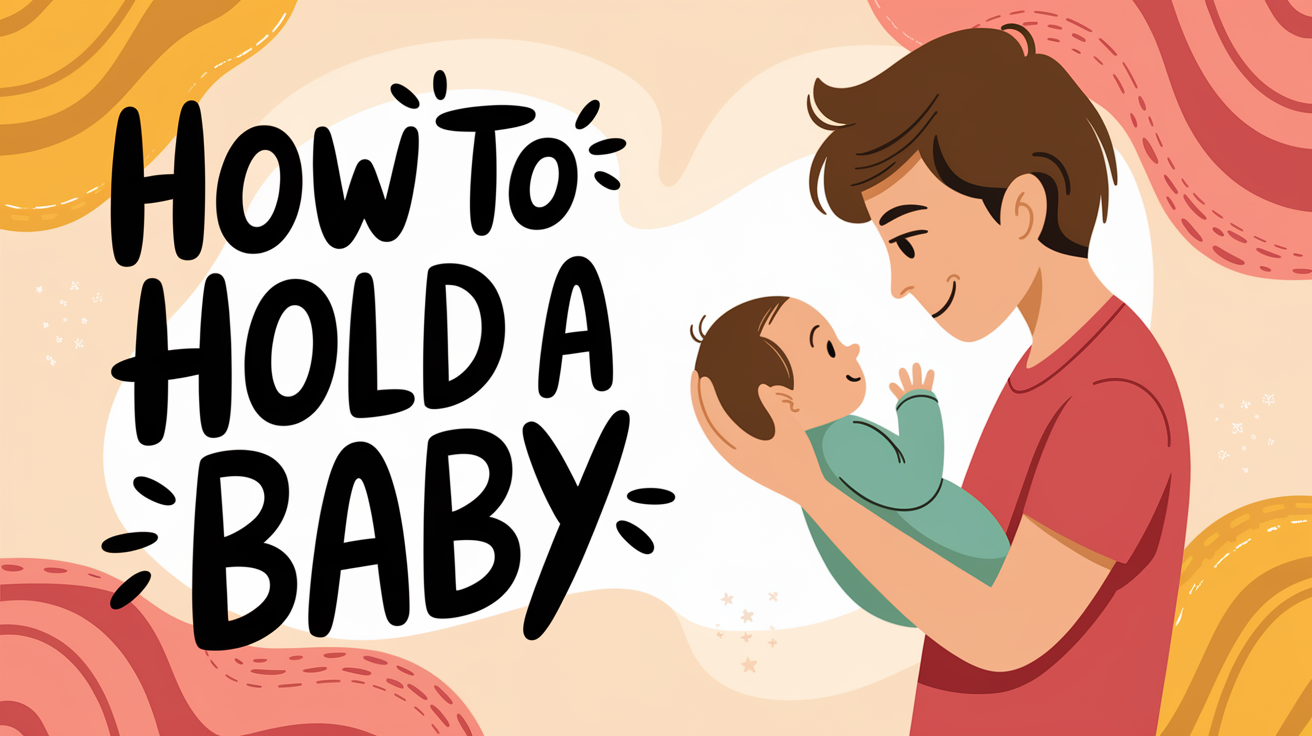
Holding a baby the right way keeps the baby safe, calm, and happy. Newborns have soft neck muscles and need support for their heads. If not held properly, they might feel scared or uncomfortable.
A good hold helps the baby feel loved and secure. It also helps with feeding, burping, and bonding. You don’t need to be afraid—once you know the steps, it becomes easy and natural.
This guide will show safe, simple ways to hold a baby, even for beginners. Whether you’re a parent, grandparent, or babysitter, learning the right way can make a big difference.
Holding a baby the correct way shows care, builds trust, and helps the baby grow strong and healthy.
Why It’s Important to Hold a Baby Correctly?
Holding a baby the right way keeps them safe and helps them grow healthy. It’s one of the most basic skills new parents need to learn.
- Proper holding prevents injuries to the baby’s neck and head
- Correct positions help with digestion and reduce gas or spit-up
- Good holding techniques calm babies and reduce crying
- The right positions build strong bonds between babies and caregivers
- Safe holding prevents accidental drops and injuries
- Correct methods support healthy physical development
Learning how to hold a baby correctly gives parents and caregivers confidence. With practice, these skills become natural, making both the baby and the person holding them more comfortable and relaxed.
Things to Do Before You Pick Up The Baby

Taking a few simple steps before picking up your baby can make the experience safer and more comfortable for both of you.
- Wash your hands thoroughly with soap and warm water to remove germs
- Find a comfortable position where you can sit or stand safely
- Remove jewelry like rings or bracelets that might scratch the baby
- Make sure you’re calm and relaxed, as babies can sense tension
Being prepared helps you feel more confident when holding your little one. These small actions create a safe environment and allow you to focus completely on the special bonding time with your baby.
Remember that practice makes perfect – the more you hold your baby, the more natural it will feel.
Step-by-Step: How to Hold a Baby Safely
Holding a baby properly is essential for their safety and comfort. Follow these simple steps to ensure you’re supporting your little one correctly.
Step 1: Support the Head and Neck

Always keep one hand under the baby’s head and neck. Their neck muscles are not strong enough yet to support their heads.
Step 2: Position Your Arms Correctly
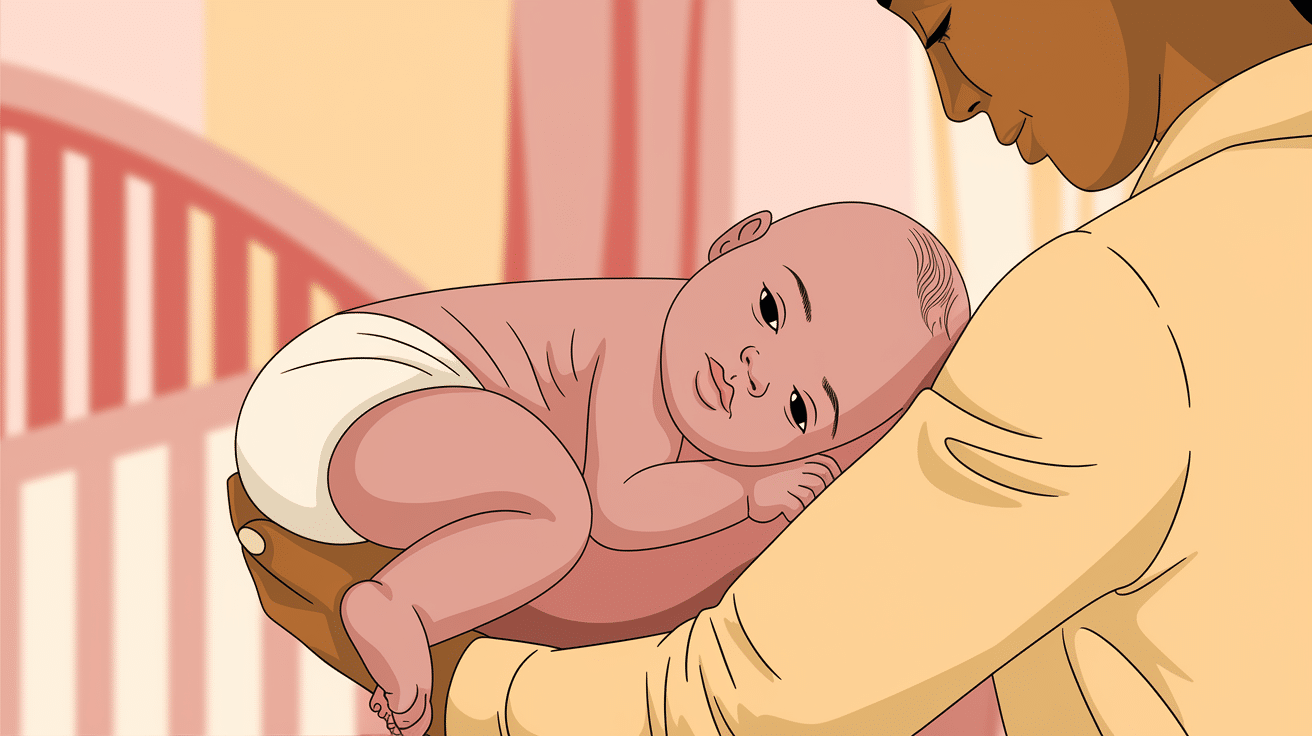
Create a cradle with your arms. Place the baby’s bottom in the crook of your elbow and let their body rest along your forearm.
Step 3: Keep Baby Close

Hold baby close to your chest or body. This helps them feel secure and gives you better control.
Step 4: Maintain a Firm but Gentle Grip
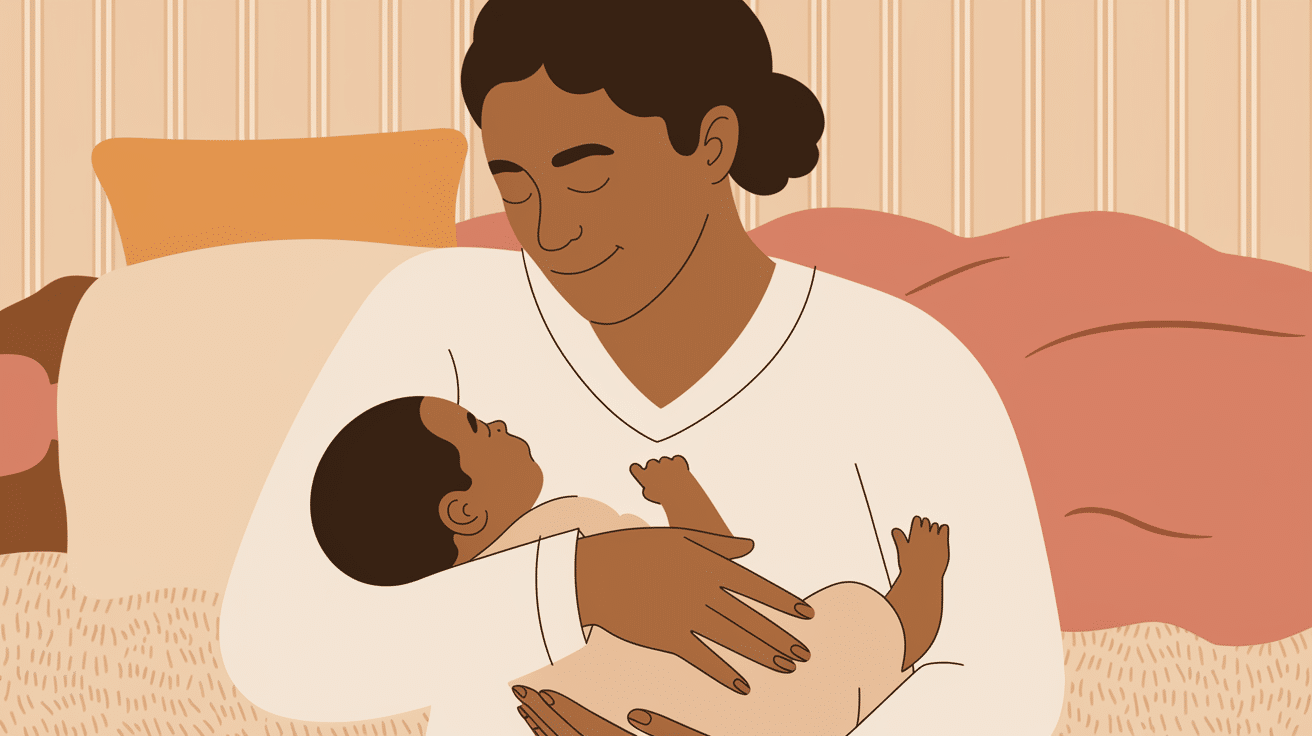
Hold baby firmly enough that they feel secure, but gently enough not to cause discomfort.
Step 5: Adjust Based on Activity
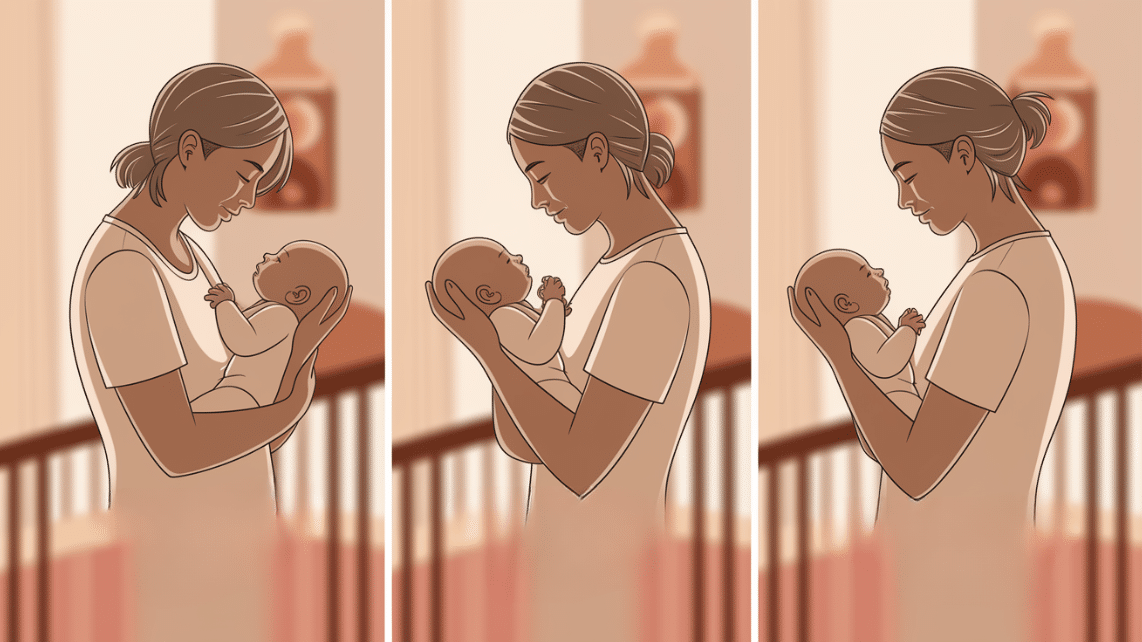
Change your hold depending on what you’re doing. For example, use a shoulder hold for burping or a cradle hold for feeding.
Different Ways to Hold a Baby
There are several comfortable and secure positions for holding your baby, each serving different purposes and situations. Finding the right hold can calm your baby and make bonding time more enjoyable.
1. The Cradle Hold

Support the baby’s head in the crook of your elbow while your arm holds its body. Your other hand can support the baby’s bottom or wrap around for extra security.
2. The Shoulder Hold
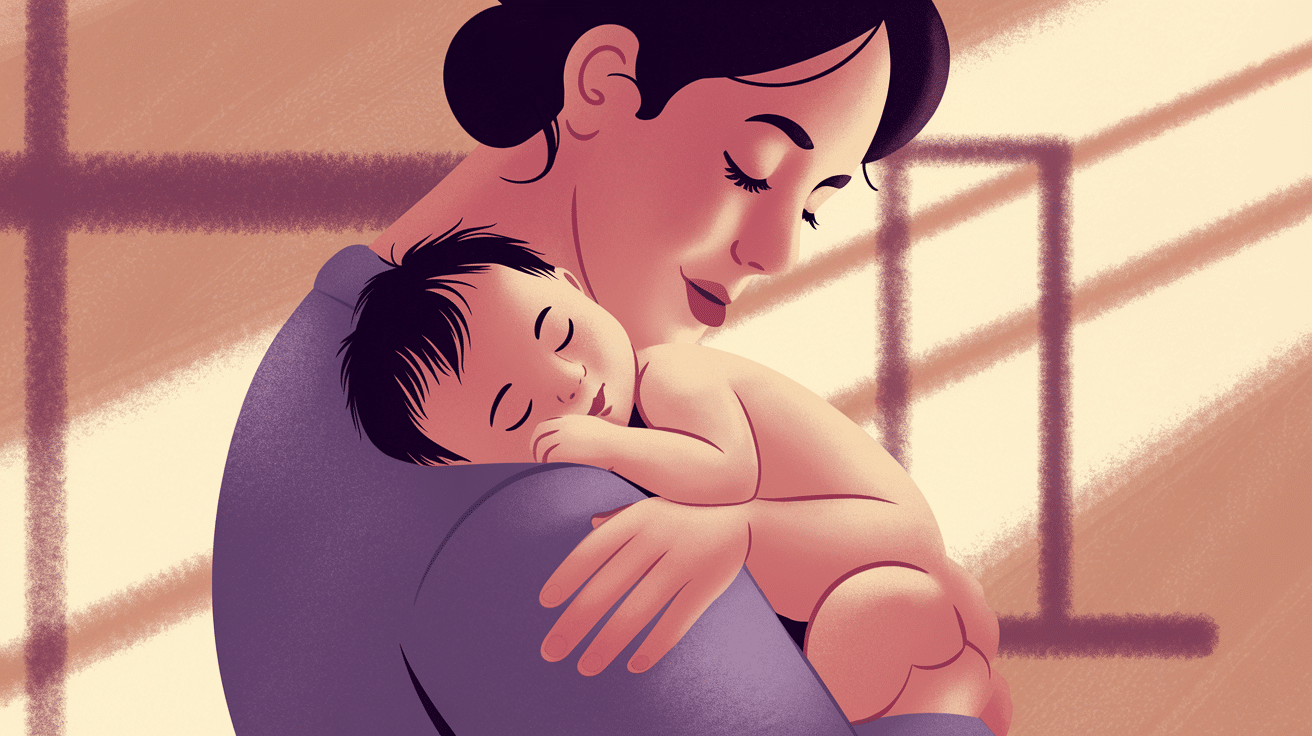
Place the baby upright against your chest, with its head resting on your shoulder. One hand supports the baby’s bottom, while the other hand secures the baby’s back and neck.
3. The Football Hold
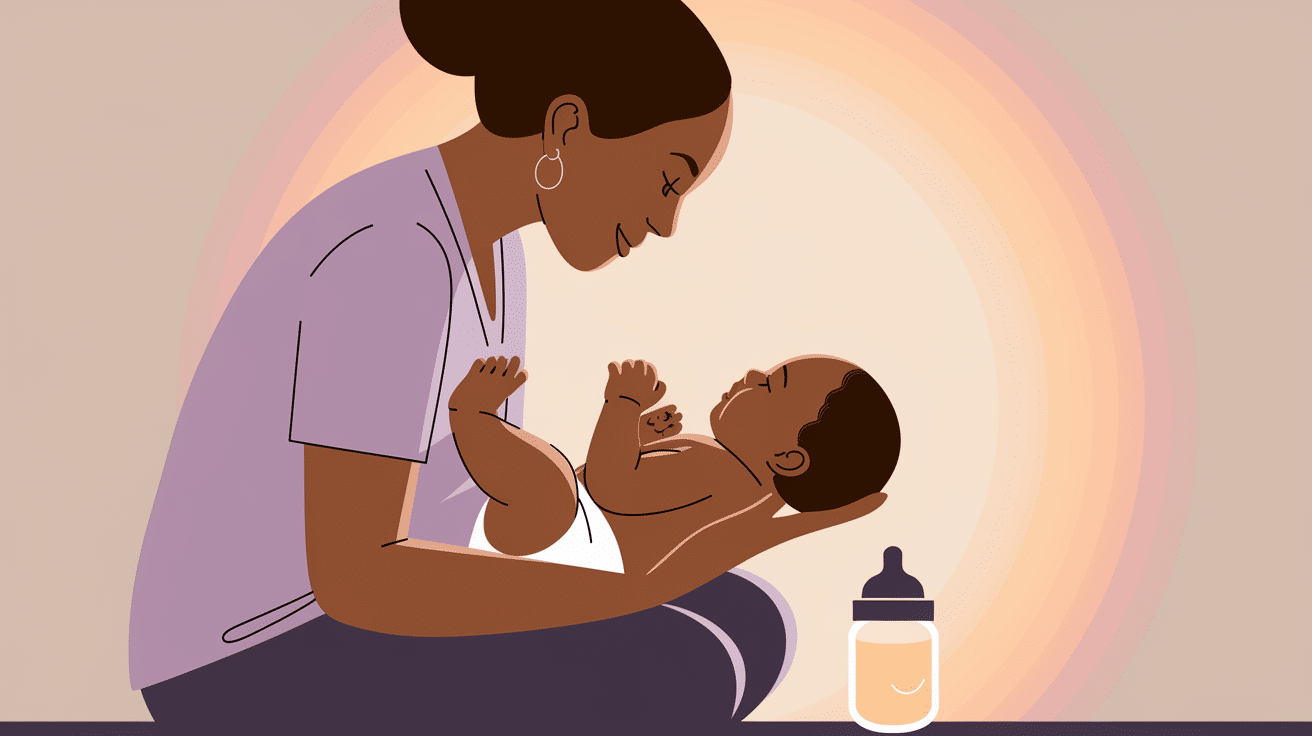
Tuck the baby along your forearm, with its head in your hand and body resting along your arm against your side.
4. The Lap Hold

Sit with the baby facing up on your lap. Support their head with one hand while the other hand secures their body.
5. The Belly Hold
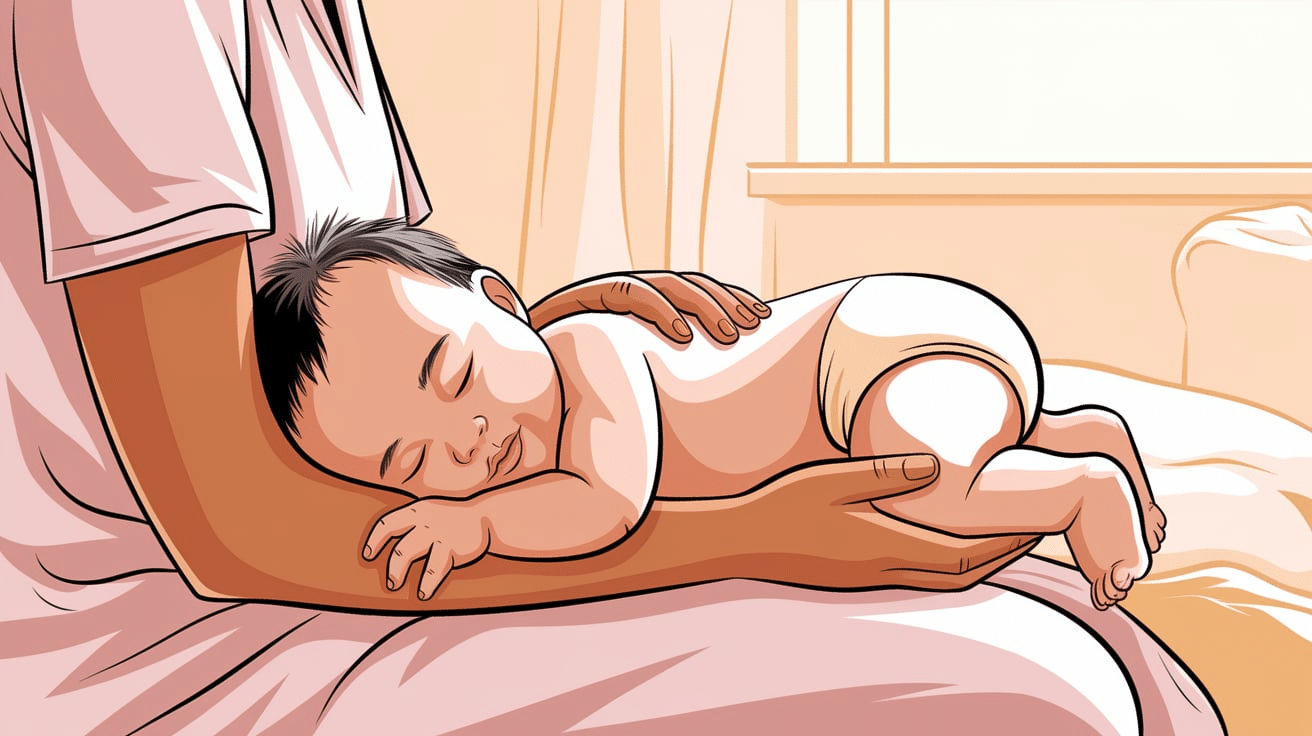
Lay the baby face down along your forearm, with their head near your elbow and your hand between their legs for support. This is great for relieving gas!
Tips for Holding a Newborn
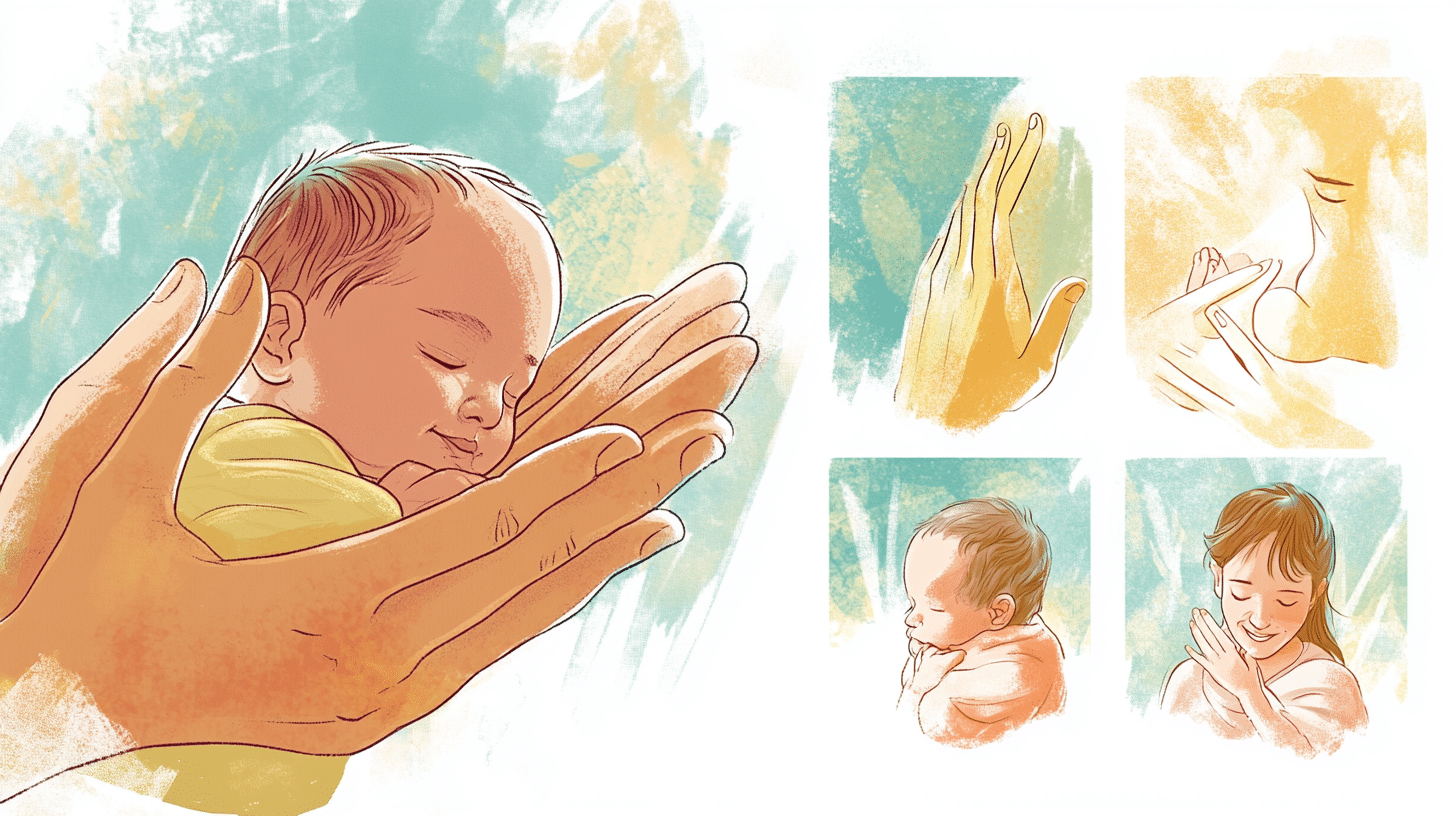
Holding your baby properly ensures comfort and safety for both of you during those precious moments together.
- Support the head and neck at all times since newborns can’t control these muscles yet.
- Use both hands until you feel confident, keeping one hand under the head and the other supporting the bottom.
- Keep your baby close to your chest to help them feel secure and regulate their body temperature.
- Stay relaxed as babies can sense tension – take a deep breath if you’re feeling nervous.
- You can try different holding positions, such as the cradle hold, shoulder hold, or football hold, to find what works best.
Remember, practice makes perfect! With time, holding your little one will become second nature, and these special moments will create a strong bond between you and your baby.
Common Mistakes to Avoid

Even experienced parents sometimes slip up when holding their little ones. Knowing what not to do is just as important as learning proper techniques.
- Not supporting the baby’s head and neck properly
- Holding the baby too loosely or too tightly
- Forgetting to wash hands before handling the baby
- Passing the baby to someone else without warning
- Holding the baby in uncomfortable positions for too long
With patience and care, you’ll soon feel more comfortable handling your little one. The more you practice, the more natural it will become.
When to Ask for Help?
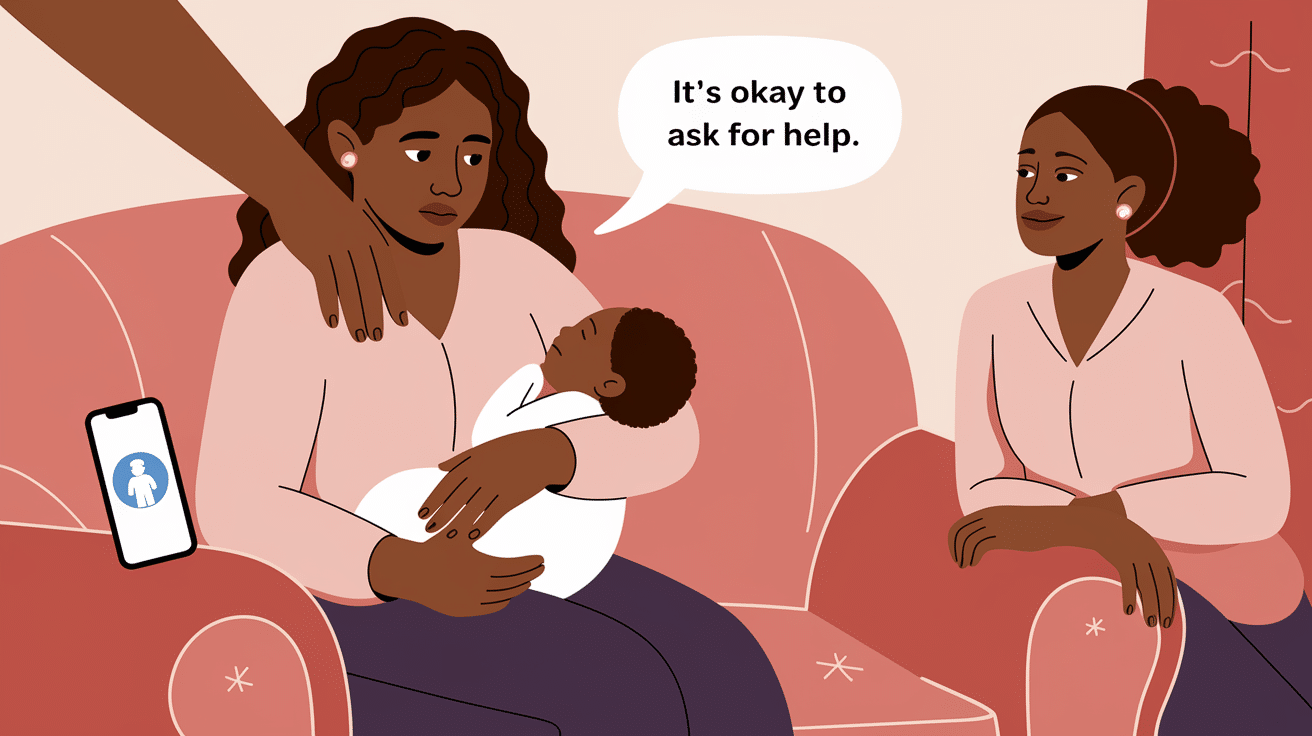
Reach out if you feel overwhelmed, tired, or unsure about proper holding techniques. New parents should seek assistance if the baby seems uncomfortable or cries despite trying different positions.
Don’t hesitate to call your doctor if your baby has trouble breathing, unusual fussiness, or if something doesn’t seem right. Remember that family members, friends, pediatricians, and lactation consultants are resources ready to support you.
Asking for help isn’t a sign of weakness – it shows you’re focused on giving your baby the best care possible. Everyone needs support sometimes, especially with a new baby.
The Bottom Line
Holding a baby correctly keeps them safe and happy while building your confidence as a caregiver. Remember these key points: always support their head and neck, wash your hands first, and keep them close to your body for security.
Try different positions, such as the cradle hold (perfect for feeding), the shoulder hold (great for burping), or the football hold (ideal if you’re moving around). The position you choose depends on what you’re doing and what makes your baby comfortable.
Don’t worry if it feels awkward at first—practice makes perfect! With time, you’ll learn your baby’s preferences and what works best for both of you.
What’s your favorite way to hold your little one? Have you found any positions that seem to calm them instantly when they’re fussy?
If you’re interested in more informational content on mothers and babies, feel free toclick here and explore other blogs that you might enjoy.
